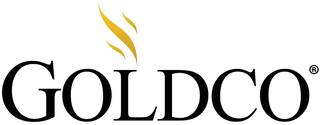Forget Stock Picking: 'VOO and Chill' Is Good Enough for This Money Writer
Money is not a client of any investment adviser featured on this page. The information provided on this page is for educational purposes only and is not intended as investment advice. Money does not offer advisory services.

When people first learn that I am a personal finance journalist, they often ask me what they should invest in. Up until recently, I couldn’t even answer that question for myself, let alone give someone else recommendations.
My canned response usually goes something like: “I’m no investing expert. I cover Main Street — not Wall Street.” I say this not just as a legal disclaimer (please, do not take my reporting as investment advice) but also because I simply loathe thinking about stocks. That’s part of why it took me 32 years to open my first brokerage account.
But when I crossed that financial milestone this summer, I admit, I felt very accomplished, especially since it followed my first home purchase in December. Finally, I’m starting to feel like a bona fide adult.
The impetus for setting up the investment account was that I kept watching the interest rate on my savings account tick down. Meanwhile, the stock market was rallying. I wanted in on the action, and I had enough in emergency savings (and contribute to a 401(k) and a Roth IRA). So I decided the leftovers would be put to better use in a Fidelity brokerage account.
However, the newfound pride in my financial self-sufficiency quickly waned when it came time to decide where, exactly, to invest the $5,000 I had just transferred into the account. Given that I try to think as little about stocks as possible, I opted for simplicity: 100% in VOO, a low-cost exchange traded fund, or ETF, offered by Vanguard that tracks the S&P 500 index.
Or, in Reddit vernacular, I decided to “VOO and chill.”
VOO and chill — in this economy?
Historically, investments like VOO or other ETFs that track the S&P 500 make a great “default” for casual investors, according to Patrick Huey, principal advisor and owner of Victory Independent Planning.
“VOO and chill — letting time do the work — is iconic for its simplicity and efficiency,” Huey, who’s also a certified financial planner, says in an email.
If you’ve got an emergency savings fund and are on-track with retirement contributions, Huey says the VOO-and-chill strategy is an “entirely rational, hands-off” way to ease into long-term investing. “I’m all for that.”
“The S&P is one of the greatest investments of all time,” says Todd Sohn, an ETF strategist and managing director at Strategas Asset Management. “It’s a great starting point for the vast majority of people.”
VOO in particular boasts very low fees, with an expense ratio of 0.03%, making the costs “almost irrelevant,” Sohn says. As for returns, VOO is nearly identical to the S&P 500. Year-to-date, VOO's price increased 14.73% versus the S&P’s 14.83% growth, and 10-year returns are 15.26% and 15.30%, respectively. Not bad for a set-it-and-forget-it investment.
For everyday investors, beating that return is nearly impossible, Sohn says.
In 2024, for example, less than 5% of actively-traded equity funds outperformed the S&P 500, based on an analysis of risk-adjusted returns.
“Unless you are literally sitting at a desk all day full-time doing this. It's extremely challenging to trade like that,” Sohn says. “For the majority of people, it’s just too hard.”
'Can you really chill' amid tech's growing AI bubble?
The core perk of VOO and chill is that you don’t have to waste time trying to beat the market — when you can essentially be the market. But what if there are emerging issues with the market itself?
Lately, many investors — including myself — are starting to get concerned about the composition of the S&P 500 index, and how that might affect the slacker-friendly investment strategy.
“VOO’s real-world risk profile has changed in the last few years,” Huey says. “Your ‘diversified’ index is far more exposed to the fates of Apple, Microsoft and Nvidia than it appears.”
While the S&P 500 is a measure of the 500 largest publicly traded U.S. companies, a handful of massive technology companies — the Magnificent Seven — account for approximately 36% of the total weight of the index, according to Sohn, which can present concentration risk even for portfolios holding passively managed index funds.
“So $36 out of every $100 you invest in S&P is going to technology,” he says, particularly in firms going big on artificial intelligence.
Several analysts are warning of an AI bubble, and if that bubble were to burst, it would have a major impact on VOO and similar ETFs, even though they aren’t explicitly tech investments.
But that’s no reason to write off the VOO-and-chill strategy entirely. In fact, it highlights the “chill” part of the strategy, Huey says.
“My question is always: Can you really chill?” he says, noting that the VOO has fallen as much as 30% during steep sell-offs in the past. “Staying disciplined is the true key, not simply choosing a set-it-and-forget-it product.”
Add ons for less tech exposure
To make potential sell-offs a little more palatable, Huey and Sohn both suggest balancing out VOO with ETFs that provide exposure to more than just the major U.S. firms.
Earlier this month, I set up a portion of my paycheck to go into the Vanguard Total International Stock ETF (VXUS) for precisely that reason. VXUS is another low-cost ETF that tracks the international stock index, and Sohn says it can easily supplement VOO and chill.
Similarly, Huey says international ETFs are good options, as are small-cap and diversified sector ETFs, which can provide exposure to often overlooked companies and help investors further diversify their portfolios.
While boring, Sohn notes that Treasury bills can help round out VOO, too. T-bills are U.S. debt securities, and he says the TBIL ETF — which provides exposure to the three-month U.S. Treasury — acts “like a cash proxy.”
“In the end, successful investing isn’t just about chilling,” Huey says, “it’s about building a plan (and a portfolio) you can actually stick with when the world is decidedly not chill.”
More from Money:
There Are Over 12,000 ETFs. Which One Is Right for Your Age?
Why Investors Are Piling Money Into ETFs at a Record Pace
This Underused Retirement Strategy Could Boost Your Fixed-Income Payout by 23%






